May 1999
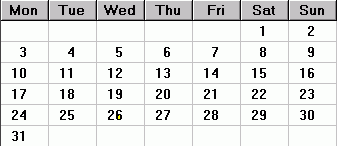
Home >> Kargil War >>
VayuSena
© VayuSena
[v2.3][11.07.2004]
The following is a day by day description of Operation Safedsagar ("White Sea") compiled from publicly available sources. Please note that it is no way complete; for example, if there is no mention of escort flights (which were flown with every strike package) on a particular date, it does not mean no escort missions were flown. Similarly, if there is no mention of enemy SAMs being encountered, doesnt necessarily mean that none were fired on that day.
Op Safedsagar was conducted completely by the IAF's Western Air Command (WAC) and commenced on May 26, 1999.

May 08: The past few days had revealed the prescence of armed intruders in some areas in the general area of Kargil. While the identity of these intruders was still not clear, indian patrols had already come under fire resulting in first casualties. Indian Army's Northern Command informed the Army HQ the need for helicopter gunships, even as Artillery fire had flared up on both sides.
The request for air power reached the highest levels of government via the IAF. Due to a lack of a complete picture of the ground situation and fearing an escalation, no helicopters are allowed. Utltimately it is only on May 25 when the decision to induct the IAF was taken.
May 11: The Indian Army launches Operation Vijay.
May 12: Enemy sighted in Drass sector on Tololing. Deputy Commander of 70 Inf Bde and CO 16 Grenadiers do a helicopter recce, confirm intrusion. IAF helicopter fired at, lands with damaged rotor. Northern Command places J&K theatre under high alert. [03] Western Air Command (WAC) put on alert. Operational Readiness Platform (ORP) mounted at Srinagar and Avantipur [04]
May 13: LOROP (Long Range Oblique Photography) mission launched by Jaguar aircraft. MOPS (Mobile Observation Posts) deployed in WAC sector. Mini DC (Direction Center) activated at Leh. Communication between DC Leh and Kargil (Halipad) established on HF. [04]
May 14: Mi-17 Recee launched. Video film of the area obtained from Army Aviation helicopter. J&K sector activated and mobilization of forces undertaken for an all out air war. IAF pilots go into extensive training for firing at high altitudes. [04]
May 15: IAF chopper fired at in Kaksar, rotor damaged. [03]
May 18: CCS meeting held at Air HQ [04].
May 21: No attack sorties were being flown yet, but the IAF started sending Canberra recce missions over Kargil from May 21. Sqn Ldr Alaggarya Perumal of the 106 SPR Sqn was the first pilot to go in - "The air war began with my flight. It was the first mission over Kargil," remarked Sq Ldr A Perumal later. His navigator was Sqn Ldr UK Jha. They were flying over Batalik when the Canberra was hit by MANPADS missile near NQ 1392 [04], 4 Km from LoC inside own territory. The missions was being flown in a racecourse pattern over the target area and it was only in the second run that it was hit. Moreover, while the first circuit was at 28,000 Ft, the second one was at a lower altitude. Sqn Ldr Perumal however managed to land his safely plane at Srinagar, validating his great skill as pilot. The radio initially failed on initial impact but later became operational on the return journey to Srinagar. Now flying over the mountains at the Height of 2000 ft the Canberra was given fighter escort by 223 Sqn MiG-29s piloted by Sql Ldr S Aggarwal and Flt Lt Ranawat [07],[08].
The Canberra was later returned to regular service after repairs, but later recon missions were flown either by Jaguars or MiG-25Rs.
May 18: CCS meeting at Air HQ. [04]
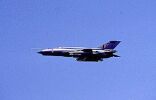
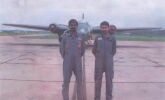
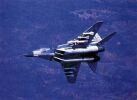
May 25: ACM AY Tipnis, CAS makes an incognito visit to Srinagar and Avantipur for an on the spot assessment of the ground situation. Meets Commander of the Army's 15 Corps and assures air support [04].
May 26: At 0630 hrs the Indian Air Force started armed air action against Pakistani forces, who had infiltrated and established themselves on the Indian side of the LoC, in general areas of Dras-Kargil-Batalik. The attack started of with six sorties against three targets with MiG-21s, MiG-27s and Mi-17 helicopters. The aircraft faced intense MANPADs and AAA fire. All aircraft returned safely and without any damage. Positions on Tiger Hill engaged by Mi-17s [04].
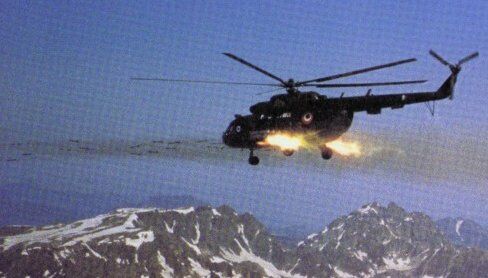
May 27: The IAF launched further attacks against the infiltrators. These were a continuation of the attacks which started on 26th and were in general area within the Dras-Kargil-Batalik Sector, south of the Line of Control. The Tololing ridge was attacked and pilots reported tents, bunkers and stores destroyed. In the process, however, one Mi-17 Helicopter was hit by a Stinger missile fired by PA personel from Indian territory. The Mi-17 was seen to crash by the other helicopters on the mission. The entire crew of four, comprising Sqn Ldr R Pundhir, Flt Lt S Muhilan, Sgt RK Sahu and Sgt PVNR Prasad were killed.
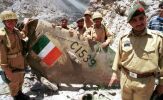
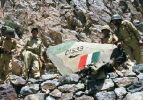
Wreckage of Sqn Ldr Ajay Ahuja's MiG-21M (C1539)
While firing air to ground weapons one MiG-27 aircraft had an engine malfunction over the target area in Batalik sector on the Indian side of the LoC. Flt Lt Nachiketa ("Nachi"), the pilot of this aircraft, informed this on the radio to his leader, first calling out "Nachi engine flame out, relighting". After a little while he made another call "Nachi ejecting now". Sqn Ldr Ajay Ahuja, also airborne on a mission at the same time, stayed over the area in an attempt to spot the landing of the ejected pilot so as to direct the rescue helicopter, exhibiting great daring as enemy SAMs were known to be in the area. While orbiting the area, he was hit by a missile and ejected. The aircraft (MiG-21M #C1539) was with in the LoC when he was hit
May 28: The attacks continued despite the initial losses and Jubar and Mashkoh valley sectors were attacked
May 29, 30, 31: Air attacks continued. The inhospitability of the terrain to combat flying operations and difficulty of visually acquiring the target (circled) stands out all too clearly in the photographs shown below. These were taken from a fighter during an attack:
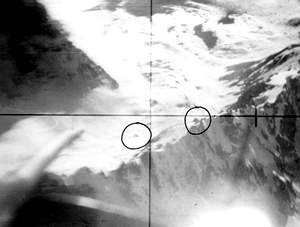 |
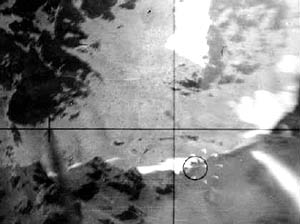 |
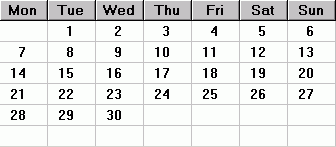
June 01: This was the seventh day of the airstrikes. In spite of cloudy weather in the mountains, aircraft were utilised to attack certain new targets in the same Kargil Sector and Batalik Sub-Sector. In preparation for the future operations, a Mirage-2000 carried out a strike against a dummy target in Pokhran to test the ability of dropping free-fall bombs; uptill now the Mirages were configured for precision strike only.
June 02: Air Attacks were carried out in two areas – one the Batalik area and at an important hill feature North West of Drass. There were clouds covering some of the valleys and the cloud cover increased as the day progressed. Nevertheless the target areas were located by aircraft and engaged.
June 03: The cloudy weather persisted - however aircraft found the gaps required, not without difficulty, to negotiate the weather and put through their attacks in the Mashkoh and Dras sub-sectors at various times in the day. Pilots report presence of F-16s on the Pakistani side of the LoC [04].
June 04: Tenth consecutive day of airstrikes. The day remained cloudy in the area of operations. Nevertheless, the IAF put through its attacks throughout the day. Air Operations were carried out over both the Dras and Batalik sub-sectors.
June 05: The IAF did not carry out any attacks on 05 June. Planning, done jointly with the Army, did not envisage any requirement on that day. FL Lt Nachiketa was released and reached wagah in the evening. He was flown to a hero’s welcome at Delhi where he was subsequently received by the Prime Minister as well as the President who congratulated him on behalf of a grateful nation. It later emerged that he was subjected to intense interrogation by the Pakistani intelligence agencies using physical and mental measures. Flt Lt Nachiketa, a good Air Force Officer, withstood these. He expressed eagerness to get back into a fighter cockpit and complete an unfinished job.
June 06: The weather did not hamper air operations and all attacks were put through.
June 07: The weather was fine over the target area and air operations were not hampered in any manner. Air attacks were carried out over the Dras sub-sector, close to Mashkoh valley and North West of Dras.
June 08: The weather cooperated and targets in Mushkoh Valley were attacked.
June 09 to 14: During this period, the IAF carried out attacks against enemy positions at Tololing, Batalik sector and Mashkoh valley. Bad weather precluded air strikes on the June 10 and 11, which was just as well as the Army had no urgent requirement during that period. Heavy clouds came down to below mountain tops, preventing penetration by any class of aircraft. The latter half of the week saw an increase in cloudy weather but did not significantly affect the conduct of air operations.
The Pakistan Army meanwhile suffered their highest ranking KIA; Brig Nusrat Sial of the 62 Inf. Bde. when a Pak Army Aviation helicopter crashed on 13 June. Three other officers also lost their lives [09].
June 15 and 16: The weather during the beginning of that week was partially cloudy. Air strikes were launched against enemy positions in the Mashkoh Valley area, with good success.
June 17: Destruction of Enemy Camp : Muntho Dhalo
An exceptionally effective airstrike from 7 Squadron Mirage-2000s was conducted against an enemy supply and adminstration camp in the Muntho Dhalo area, Batalik sector. Initially small in number, the camp increased in size till the time was considered ripe to launch an air strike. The target was flattened and razed to the ground by the 'dumb' HE bombs, as vividly brought out by the aerial photographs below.
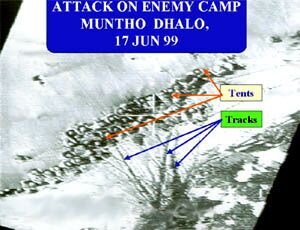 |
Before the Attack: The number of tents and structures, and the tracks leading from the camp up the hillside are clearly visible. |
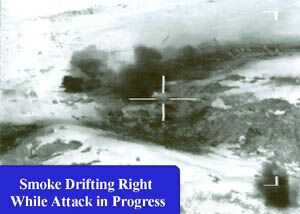 |
Smoke drifting right while attack in progress: This picture was taken during the attack. The bomb explosions and the dense smoke, being drifted to the right by the wind, are apparent. Not much of the target is visible due to the smoke. |
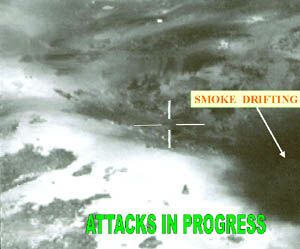 |
Attacks in Progress: Another picture taken during the attack: The smoke seen in the last photograph has increased in size and drifted more to the right. Again, not much of the target is visible. |
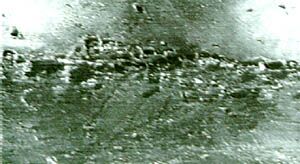 |
Target after Attack: And finally, the target after the IAF had pressed home their attacks. Except for a few rags and shreds of tent material, all that was left after the smoke cleared away were these bomb craters and rubble. |
Confirmed Pak Army Officer KIAs in this raid are: Maj Muhammad Ali Hyderi, Capt Zulfikar Ali, Maj Jawwad Khayal, Capt Izhar and Maj Zikriiya. The Pakistani codename for Muntho Dhalo was "Badr" or "Badar" [09],[10].
June 17: Fall of the Tololing Ridge - a culmination of 3 Weeks of Targeting.
The Indian Armed Forces finally achieved major success in the Tololing area. The general area of Tololing has, on and off, been a crucial ridge in these operations. The IAF has carried out many airstrikes in this general area.
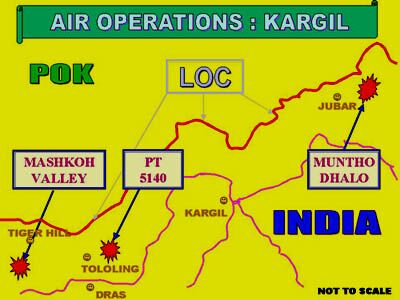
The beginning of Operation Safed Sagar started with the early low level air strikes in the Tololing area, both by helicopter as well as fighters. At that time, the enemy was bunched in more openly visible deployments, and it was a golden opportunity to destroy them in their positions before they broke up into the small, dispersed targets they had become by now. The IAF, in spite of the presence of Stinger SAMs, engaged these targets repeatedly in very effective attacks, coming down low to strafe the enemy positions with gun and rocket fire. In one of these attacks one Mi-17 was lost to an enemy SAM. The fall of the Tololing Ridge into Indian hands was a landmark achievement in the entire conflict.
The sequence of each operation was carefully planned and coordinated; usually, the target area was first engaged by the Air Force to degrade the enemy resistance, morale and will to fight before being engaged by the Army. The Tololing ridge was no exception; concentrated attacks by helicopters and fighters were carried out commencing from 26 May in the Tololing area to recently in the Pt 5140 area, interspersed by brief respites in air operations as the Indian Army maneuvered to realise their gains.
Apart from the strike against Muntho Dhalo, successful MiG-25 mission(s) were flown at medium altitude, which is an unusual profile for the type.
June 18 and 19: No strike operations (no requirement in the joint Army and Air Force plans).
June 20 and 21: No strike operations due to bad weather.
June 22: No strike operations (no requirement in the joint Army and Air Force plans).
June 24: On 24 June the IAF carried out airstrikes in the Tiger Hill area, an area which had been targeted by the Air Force several times during the operation. The airstrikes were successful and the target was engaged with a good degree of effectiveness. Reports from the pilots who carried out the mission confirm that the strike had been accurate. The attacks in the Dras sector were also effective. These attacks was also witnessed by Indian troops who were in visual contact, and who confirmed a large number of casualties being evacuated after the strike. Two Mirage-2000s attacked Tiger Top with Paveway LGBs. The strike was witnessed first-hand by ACM Tipnis, from the rear seat of a Mirage-2000TH [02]. Tharu, Pt 4927 and Kukartang were also attacked [04].
Meanwhile another Pakistani helicopter crashed resulting in the death of two more officers including at least one Colonel [09].
June 25: Air strikes and other missions continued; the strikes were successful and were witnessed by the Indian troops. Starting on this date the IAF commenced 24 hour operations against the enemy. These round the clock attacks were intended to increase the pressure on the enemy by wearing him out and even denying him proper sleep. The intension was to keep him under pressure round the clock so as to keep the enemy constantly on his toes, thus wearing him down and sapping his resilience, stamina and ability to sustain himself.
Lt Mohd. Maaz Ullah Khan (8 NLI)'s diary captured after the conflict reveals that a SA-16 missile was fired on a Mirage-2000 but missed [10].
June 26: Airstrikes were carried out against enemy camps in the Dras area and Mashkoh Valley as well as the Muntho Dhalo areas. SAMs were fired on the IAF aircraft. While the camp on Muntho Dhalo had been destroyed on the 17th, another enemy camp had been established since then in the same general area - this camp was also attacked on the 26th.
June 27: Targets were attacked in the Dras and Batalik sector in the night. Their success was confirmed by photo-recce missions and troop reports received on the 28th.
28 June: The Dras sector and Mashkoh valley were attacked. Another successful daylight attack was carried out on an enemy supply camp at Kukar Thang in the Mantho Dhalo area. The camp was severely damaged, and a big fuel dump was seen to explode in a huge ball of fire, witnessed by ground troops who were positioned just 800 meters away.
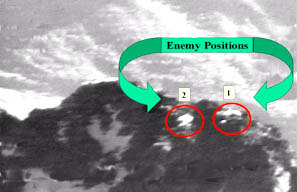 |
Picture showing 2 Targets on Tigerhill |
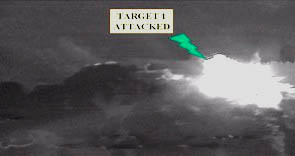 |
Target 1 Attacked |
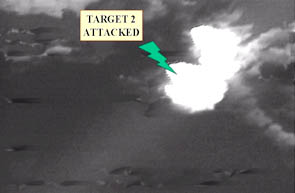 |
Target 2 Attacked. Both positions required one precision attack each. |
June 29: In the early morning the Air Force carried out pre-dawn attacks against enemy camps at Jubbar in the Mantho Dhalo area, as well as on the enemy camp at Kaksar. Effectiveness of these attacks were confirmed by the reconnaissance mission the next morning.
Tiger Hill in the Dras Sector was also effectively attacked by day as well as night.
The enemy's major supply and administration camps at Kaksar, Muntho Dhalo area and North of Maskoh valley are under regular surveillance and were attacked as required. During these attacks, fighter pilots encountered sporadic anti aircraft fire and hostile Surface-to-Air missile launches, which indicated the importance of these targets.
June 30: Night airstrikes were carried out against an enemy camp SW of Kaksar. The bombs were seen to explode on the target. Other night attacks were also carried out on an enemy camp in the Muntho Dhalo area. The Army later confirmed that attacks carried out were very successful, and caused serious damage to the targets. Notable among these was a direct hit on an enemy supply camp at an important hill feature in the Dras sector, and an effective strike against another supply camp at Pt 5280 in the Kaksar area. Other strikes were launched against enemy camps in the general area NE of Tololing and SW of Kaksar.
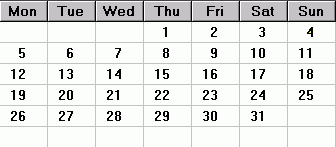
July 01: On a reconnaissance mission, an enemy supply camp was detected in a shallow valley approximately 2.5 km west of Tiger Hill. This camp was attacked on this morning by a large strike force with a considerable payload, with very good results, which was confirmed by nearby field units [05]. The same was subsequently been confirmed by photo reconnaissance.
July 02: In the night a large mixed force of aircraft carried out airstrikes against enemy positions in the Kaksar area. Success was confirmed when field reports were received the next day. Pt 5280 and Pt 5060 were successfully engaged [04]. In the evening, clouding began to increase in the area of operations till, on the 3rd morning, there was extensive clouding in all the target areas. As a result, no airstrikes were carried out on 2nd night and 3rd daylight.
July 03: In the previous few days extensive reconnaissance had created many opportunities for the IAF, but during lulls in enemy activity suitable targets for airstrikes were not always available; in such conditions, "search and destroy" missions were launched in order to try and locate and attack targets of opportunity. One such mission was sent over the Muntho Dalo area on July 03, but did not encounter any lucrative targets. Additionally, airstrikes were flown against enemy positions in the Jubbar area. An earlier planned airstrike in the Kaksar area was called off by the Indian Army due to proximity of our own troops. A reconn on July 02 had indicated enemy activity including movements of personnel on snow scooters, in a glaciated area approximately 5.5 kms North-West of Tiger Hill. A "search and destroy" mission was launched to look for potential targets in this area. However, no suitable targets were found.
July 04: The Fall of Tiger Hill
Like Tololing rdige, Tiger Hill was another area which faced relentless air attacks right from the beginning of the conflict. The nature of the terrain meant that it took a lot of time and continuous joint IA-IAF attacks on Tigerhill and Tololing before the ground situation became favourable for victory.
The target complex at and around Tiger Hill was analysed and broken into two distinct components; enemy positions on top of Tiger Hill which fed all the lower positions with reinforcements, and a crucial artery of two supply camps. While one supply camp was 2.5 kms West of Tiger Hill, the other was North of it, near the LOC.

Over the previous few days, some devastating airstrikes were sent in against enemy camps located Tiger top. These attacks were carried out by Mirage-2000 fighters using Laser Guided Bombs (LGBs). The destruction of these two enemy positions severely degraded the enemy's capability to hold this dominating hill feature. These attacks were carried out by day as well as by night, in the face of enemy anti-aircraft fire and surface-to-air missiles.
Mirage-2000s brought down dumb bombs on a supply camp near Pt 4388 with exceptional accuracy.
Due to extensive clouding there were no air strikes at night and the next morning though missions did take off and proceed to the target area. No airstrikes were envisaged in the Dras sector due to the proximity of friendly forces. However, airstrikes were carried out in the afternoon against an enemy supply camp in the Kaksar area. Eyewitness reports from the ground troops located there confirmed later that while the bombs from the first mission slightly overshot the target, the second mission scored direct hits and thick black smoke was seen billowing from the camp after the attack.
Just a couple of days later, the IAF once again devastated an enemy supply camp just 2.5 kms West of Tiger Hill. This attack was as successful as the previous ones, and was confirmed by field units of the Army as being extremely effective.
July 05: No attack missions in the morning due to poor weather.
July 06: In the Dras Sector, a pair of fighters carried out a search-and-destroy mission and discovered another enemy camp approximately 9 kms NW of Tiger Hill, consisting of one Nissan Hut and a number of Igloo tents. A Nissan hut is approximately 20 yards long, with a sloping corrugated metal roof. This target was destroyed in an attack, which has subsequently been confirmed by post attack analysis. Reconnaissance sorties were also launched in the Muntho Dhalo area and revealed a new enemy camp; subsequently, an airstrike was launched against this target, as also against enemy gun positions near the Kaksar area.
In Batalik sector a Pakistan Army Aloette and a Puma helicopter with an underslung load were sighted. Three igla shoulder fired missiles were fired at them without success [04].
July 07: Early morning saw the IAF getting off to a flying start with a devastatingly accurate attack on a logistics camp west of Tiger Hill. This camp, attacked earlier too, was crucial supply artery feeding the Tiger Hill area. The mission, led by a Flight Lieutenant, was executed with flawless precision in the face of enemy resistance in the form of anti-aircraft fire and SAMs. In the night the IAF carried out extremely effective precision airstrikes on an enemy supply camp 2.5 kms west of Tiger Hill. This target was attacked just before the fall of Tiger Hill, as part of the Air Force's plan to effectively isolate the enemy on Tiger Hill before the assault by the Army.
|
Reconnaissance and Photo-Interpretation Cell - The Invisible Heroes The IAF constantly adhered to the two accepted principles of reconnaissance - those of primacy and continuity. Nothing is so frustrating to a pilot as to plan and execute a perfect approach to the co-ordinates given to him and then not finding the target where it is supposed to be, resulting in the pilot having to unnecessarily expose himself for extended periods trying to search for the target. It is the Photo Interpretation Cell at Air HQ which analyses miles of exposed films and many square metres of photographs identifying targets and correlating them with maps to come up with exact locations. In Op Safedsagar the PI Cell worked round the clock for the whole length of the operation and ensured that the pilots found their target when their navigation aids and their own skills have taken them to the given co-ordinates. |
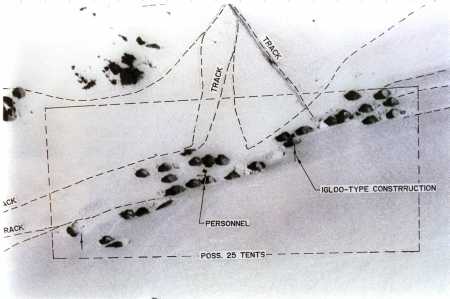 |
July 08: At around 0130 to 0230 Hrs, accurate airstrikes were flown against the camp 2.5 km west of Tigerhill. The effectiveness of the attack was confirmed by Army units. The daylight missions got off at 0700 in the morning with airstrikes achieving direct hits on enemy positions about 18 Kms North-West of Tiger Hill, North of the Mushkoh Valley area. The attacks, led by a Flt Lt, were seen to be on target and were extremely effective. Other airstrikes were carried out against targets in the Dras, Kaksar and Muntho Dhalo areas. Reconnaissance missions were also flown as usual.
July 09: Accurate strikes were carried out against enemy supply camps and gun positions by IAF Mirage-2000s on the enemy concentration along the river running from Pt 4388 in the Dras sector Northwards across the LoC. Four Mirage-2000H dropped 24 high explosive 1000 lb bombs (~12 tons of HE) in this restricted area. Some more attacks were carried out during the day which proved equally effective. Towards the evening, four MiG-21s neutralised an enemy gun position on a ridge in the Kaksar area. The Army confirmed that this attack was also extremely effective, and that the bombs were seen to land directly on the enemy camp. By this date the Indian Army had already recaptured 99% area of the Batalik Sector and 90% of the Dras Sector.
July 10: Pre-empting the enemy's attempt to continue operations from the enemy supply camp near Pt 4388, in the morning three Indian Air Force Mirage-2000H once again attacked this camp in an accurate and effective air strike with 15x1000 Lb bombs. The effect of accurate attacks with such lethal weaponry may well be imagined, and is best summed up by a message received from one of the field HQ of the Army.......
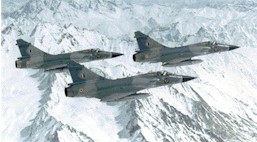
"You guys have done a wonderful job. Your Mirage boys with their precision laser guided bombs targeted an enemy Battalion HQ in Tiger Hill area with tremendous success. Five Pakistani officers reported killed in that attack and their Command and Control broke down - as a result of which our troops have literally walked over the entire Tiger Hills area. The enemy is on the run. They are on the run in other sectors also. At this rate the end of the conflict may come soon."
On the afternoon of 10 July a strike package consisting of a mix of 8 MiG-23s and MiG-27s was directed at enemy positions North West of Dras. However, the strike was cancelled at the last moment by the Army due to the rapid forward movement of their troops. During the last day or so, an increasing number of our airstrikes were called off on the request of the Army, for similar reasons.
July 11: The Directors General of Military Operations of India and Pakistan met, at the latter's request, to discuss the modalities of the Pak withdrawal.
July 12: Some statistics on Op Safedsagar. These do not include the Army Aviation Corps figures.
On this date the breakdown of air operations by task (fast jets) is as follows:
| Role | Number of Sorties | % Effort |
| Air Strikes | 0578 | 48 % |
| CAP & Escort | 0462 | 39 % |
| Reconnaissance | 0159 | 13 % |
| Total | 1199 | |
Source: Indian Air Force | ||
The total number of sorties broken down by aircraft type:
| Type | Number of Sorties | % Effort |
| Transport | 3427 | 44.9 % |
| Helicopters | 2474 | 32.4 % |
| Fighter | 1730 | 22.7 % |
| Total | 7631 | |
Source: MoD Annual Report | ||
VS Note: There is a difference in the number of fighter sorties in the above two tables. Possibly
because the MoD Annual report may be counting missions flown on later dates and/or other areas.
The total number of sorties broken down by sqaudron wherever data is available:
| Squadron | Aircraft | Number of Sorties | % Total |
Fast Jets | |||
| 1 Sqn | Mirage-2000 | 234 (274?) | 13.53 (15.84?) % |
| 7 Sqn | Mirage-2000 | 240 | 13.87 % |
Helicopter | |||
| 128 HU | Mi-17 | 620 | 25.06 % |
Source: Bharat Rakshak [02], [06] | |||
| Targets Engaged in Op Safedsagar: |
Muntho Dhalo and PT 5096 |
Source: [04] |
July 13-18: Winding Down - During the twilight of Op Safedsagar, the Indian Air Force carried out reconnaissance and Air Defence missions in the Kargil sector by day as well as night. While no evidence of the intruders was noticed, the IAF continued to keep the ground as well as air space in the sector under close watch, which also served to remind the enemy that the IAF was maintaining its traditional high level of preparedness and vigilance.
The opportunity was also taken to familiarise new pilots with the terrain, in sorties flown both by day and night. All missions were escorted by armed air defence escorts. At night, the surrounding airspace was sanitised during the specified times by dedicated air defence interceptors. Pilots who took part in this operation were sent for ground familiarisation visits to Tololing and other places to experience the terrain for themselves as well as to spend some time with the ground troops.
Revision History :
[v1.0] - [09.01.2003] - First Upload[v2.0] - [23.12.2003] - Complete overhaul; debugged content and language[v2.1] - [13.06.2004] - Added data for May 08, 11, 12 and 15.[v2.2] - [21.06.2004] - Modified entries for May 12, 21, 26, 27 June 03, 24 and July 03, 06. Added May 13, 14, 18, 25.[v2.3] - [11.07.2004] - Modified info for May 21 and June 13,17,24,25. Added table "Targets Engaged in Op Safedsagar". Modified table "number of sorties broken down by sqaudron"
References :
http://indianairforce.nic.inhttp://www.bharat-rakshak.com/IAF/History/Kargil/PCamp.htmlThe Indian Express, 10.Jun.2004Courtesy Arun Sharma (Bharat Rakshak)The Indian Express, 02.Jul.1999http://www.bharat-rakshak.com/IAF/Info/Mohanbari.htmlhttp://www.geocities.com/siafdu/canberra.htmlhttp://www.bharat-rakshak.com/IAF/History/Kargil/Perumal.htmlhttp://www.armyinkashmir.org/kargil/kargil9.htmlAnnexure-A. Extracts from diary of Lt Muhammed Maaz Ullah Khan (8 NLI)| Kargil War | : | Assault On Tiger Hill (Photofeature) |
| Kargil War | : | Maps |
| Other Ops and Incidents | : | IAF shoots down PN Atlantique (Pictures) |
| bharat-rakshak.com/IAF/History/Kargil/Shenag.html: A summary of Op Safedsagar |
| bharat-rakshak.com/IAF/History/Kargil/Amberish.html: A look at what challenges the PI cell faced and how they worked out the targets during the Kargil Conflict (Recommended Reading). |
| news.bbc.co.uk/1/hi/world/south_asia/355280.stm: BBC's Special Report: "Flashpoint Kashmir" |
Comments or Questions? Contact Us
[Home] [The IAF Today] [Other Ops & Incidents] [Kargil 1999] [1980s] [1971] [1965] |
| Top |